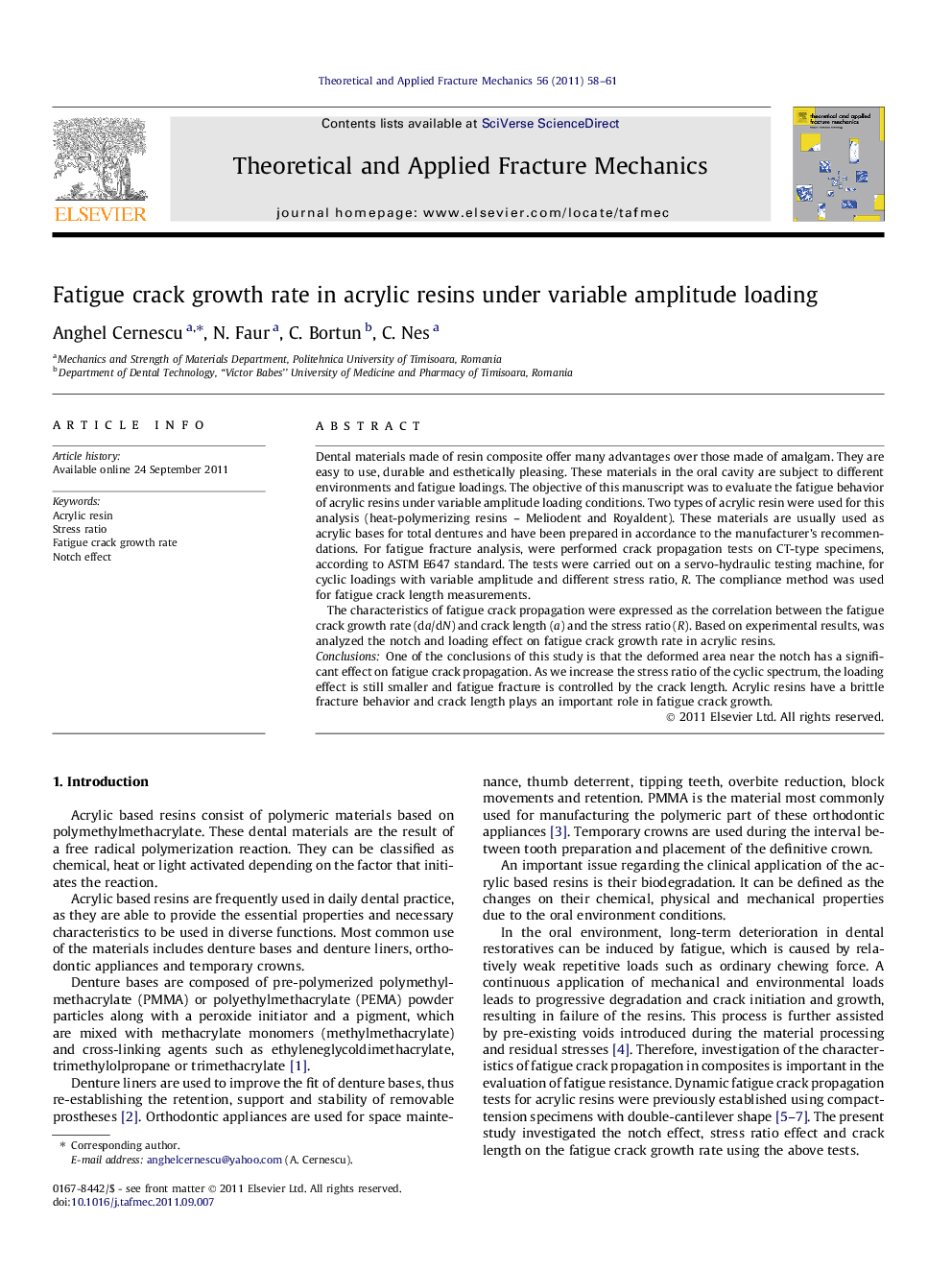| Article ID | Journal | Published Year | Pages | File Type |
|---|---|---|---|---|
| 804893 | Theoretical and Applied Fracture Mechanics | 2011 | 4 Pages |
Dental materials made of resin composite offer many advantages over those made of amalgam. They are easy to use, durable and esthetically pleasing. These materials in the oral cavity are subject to different environments and fatigue loadings. The objective of this manuscript was to evaluate the fatigue behavior of acrylic resins under variable amplitude loading conditions. Two types of acrylic resin were used for this analysis (heat-polymerizing resins – Meliodent and Royaldent). These materials are usually used as acrylic bases for total dentures and have been prepared in accordance to the manufacturer’s recommendations. For fatigue fracture analysis, were performed crack propagation tests on CT-type specimens, according to ASTM E647 standard. The tests were carried out on a servo-hydraulic testing machine, for cyclic loadings with variable amplitude and different stress ratio, R. The compliance method was used for fatigue crack length measurements.The characteristics of fatigue crack propagation were expressed as the correlation between the fatigue crack growth rate (da/dN) and crack length (a) and the stress ratio (R). Based on experimental results, was analyzed the notch and loading effect on fatigue crack growth rate in acrylic resins.ConclusionsOne of the conclusions of this study is that the deformed area near the notch has a significant effect on fatigue crack propagation. As we increase the stress ratio of the cyclic spectrum, the loading effect is still smaller and fatigue fracture is controlled by the crack length. Acrylic resins have a brittle fracture behavior and crack length plays an important role in fatigue crack growth.
